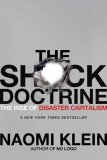Summary | Excerpt | Reviews | Beyond the Book | Readalikes | Genres & Themes | Author Bio

Critics' Opinion:
Readers' Opinion:
First Published:
Sep 2007, 576 pages
Paperback:
Jun 2008, 576 pages
 Book Reviewed by:
Book Reviewed by:
Amy Reading
Buy This Book
By the time Gail began her investigation, Cameron was long dead, but he had left dozens of academic papers and published lectures behind. Several books had also been published about the CIA’s funding of mind-control experiments, works that included plenty of detail about Cameron’s relationship to the agency. Gail read them all, marking relevant passages, making timelines and cross-referencing the dates with her own medical file. What she came to understand was that, by the early 1950s, Cameron had rejected the standard Freudian approach of using “talk therapy” to try to uncover the “root causes” of his patients’ mental illnesses. His ambition was not to mend or repair his patients but to re-create them using a method he invented called “psychic driving.”
According to his published papers from the time, he believed that the only way to teach his patients healthy new behaviors was to get inside their minds and “break up old pathological patterns.” The first step was “depatterning,” which had a stunning goal: to return the mind to a state when it was, as Aristotle claimed, “a writing tablet on which as yet nothing actually stands written,” a tabula rasa. Cameron believed he could reach that state by attacking the brain with everything known to interfere with its normal functioning—all at once. It was “shock and awe” warfare on the mind.
By the late 1940s, electroshock was becoming increasingly popular among psychiatrists in Europe and North America. It caused less permanent damage than surgical lobotomy, and it seemed to help: hysterical patients frequently calmed down, and in some cases, the jolt of electricity appeared to make the person more lucid. But these were only observations, and even the doctors who developed the technique could not provide a scientific explanation for how it worked.
They were aware of its side effects, though. There was no question that ECT could result in amnesia; it was by far the most common complaint associated with the treatment. Closely related to memory loss, the other side effect widely reported was regression. In dozens of clinical studies, doctors noted that in the immediate aftermath of treatment, patients sucked their thumbs, curled up in the fetal position, needed to be spoon-fed, and cried for their mothers (often mistaking doctors and nurses for parents). These behaviors usually passed quickly, but in some cases, when large doses of shock were used, doctors reported that their patients had regressed completely, forgetting how to walk and talk. Marilyn Rice, an economist who, in the mid-seventies, spearheaded a patients’ rights movement against ECT, vividly described what it was like to have her memories and much of her education erased by shock treatments. “Now I know how Eve must have felt, having been created full grown out of somebody’s rib without any past history. I feel as empty as Eve.”*
For Rice and others, that emptiness represented an irreplaceable loss. Cameron, on the other hand, looked into that same void and saw something else: the blank slate, cleared of bad habits, on which new patterns could be written. For him, “massive loss of all recollections” brought on by intensive ECT wasn’t an unfortunate side effect; it was the essential point of the treatment, the key to bringing the patient back to an earlier stage of development “long before schizophrenic thinking and behavior made their appearance.” Like pro-war hawks who call for the bombing of countries “back to the stone age,” Cameron saw shock therapy as a means to blast his patients back into their infancy, to regress them completely. In a 1962 paper, he described the state to which he wanted to reduce patients like Gail Kastner: “There is not only a loss of the space-time image but loss of all feeling that it should be present. During this stage the patient may show a variety of other phenomena, such as loss of a second language or all knowledge of his marital status. In more advanced forms, he may be unable to walk without support, to feed himself, and he may show double incontinence. . . . All aspects of his memorial function are severely disturbed.”
Copyright © 2007 by Naomi Klein All rights reserved.





The House on Biscayne Bay
by Chanel Cleeton
As death stalks a gothic mansion in Miami, the lives of two women intertwine as the past and present collide.

The Flower Sisters
by Michelle Collins Anderson
From the new Fannie Flagg of the Ozarks, a richly-woven story of family, forgiveness, and reinvention.

The Funeral Cryer by Wenyan Lu
Debut novelist Wenyan Lu brings us this witty yet profound story about one woman's midlife reawakening in contemporary rural China.
Your guide toexceptional books
BookBrowse seeks out and recommends the best in contemporary fiction and nonfiction—books that not only engage and entertain but also deepen our understanding of ourselves and the world around us.